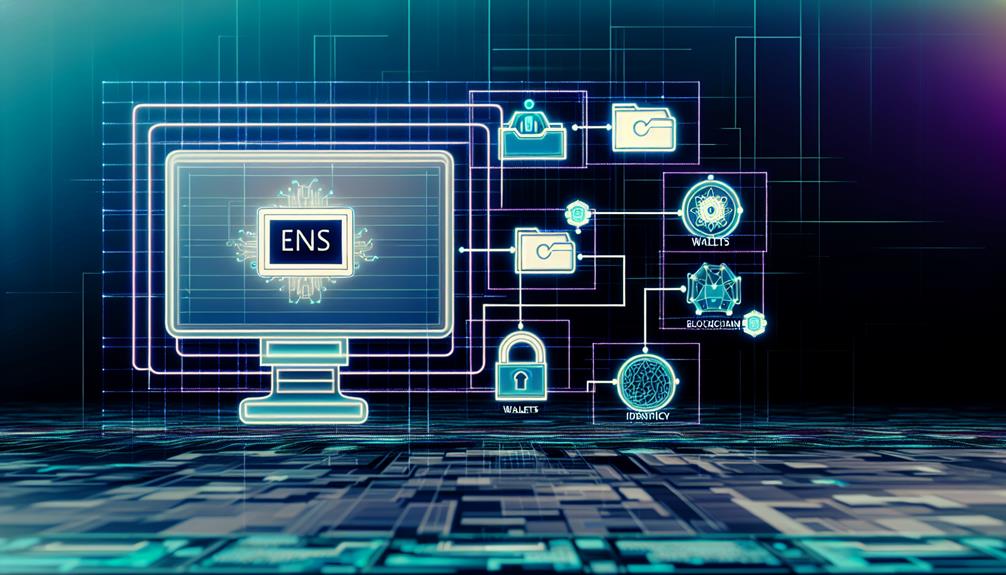If you're aiming to master the CISSP security domains without breaking the bank, you've got options that can make a significant difference. By prioritizing your study efforts on high-impact areas and leveraging free resources, you can create an effective learning strategy. Engaging with practice tests and community support can also help solidify your understanding. But how do you balance these resources with your time and guarantee you're making the most of your efforts? Exploring these strategies can provide the clarity you need to succeed.
CISSP Security Domains
Understanding the CISSP security domains is vital for any cybersecurity professional.
Each domain addresses specific knowledge areas that are essential for effective security management and risk mitigation.
Importance of Security Domains in CISSP
Understanding the eight CISSP security domains is vital for your success in the certification exam.
Each domain not only covers essential knowledge areas but also reflects the varied challenges you'll face in the cybersecurity field.
CISSP Knowledge Domains
CISSP knowledge domains serve as the backbone of the certification, encapsulating the essential areas of expertise required for effective cybersecurity practice.
Mastering these security domains demands focused study time and ongoing professional education.
Each domain's weight affects your passing the exam, so understanding their interconnections enhances your ability to tackle real-world security challenges, making this knowledge vital for your career.
CISSP Operations Security Domain
In the CISSP Operations Security domain, you'll focus on protecting critical assets through effective processes like vulnerability management and secure data handling.
Understanding key concepts, best practices, and the challenges of implementing these strategies is essential for enhancing your organization's operational security.
Key Concepts in CISSP Operations Security
Operations Security (OPSEC) plays an essential role in safeguarding an organization's sensitive information by systematically identifying important assets and evaluating vulnerabilities.
In the CISSP framework, understanding OPSEC is essential for effective risk management. You need to analyze threats and vulnerabilities to minimize the risk of unauthorized disclosure or exploitation of sensitive information.
Key activities in OPSEC include implementing robust security controls and monitoring access to information systems. This guarantees that operational procedures align with your organization's security policies.
Continuous monitoring is critical; it allows you to adapt your security measures to evolving threats and maintain compliance with regulatory requirements.
Moreover, effective communication and training are essential components of OPSEC. By ensuring that all personnel understand security protocols and their roles in protecting sensitive information, you create a culture of security awareness within the organization.
Regular training sessions can reinforce the importance of adhering to these protocols.
Best Practices for CISSP Operations Security
Protecting sensitive information effectively requires a solid grasp of best practices in operations security (OPSEC). By focusing on key strategies, you can considerably reduce vulnerabilities and mitigate risks associated with insider threats.
Here are four essential best practices to implement:
- Identify critical information: Understand what sensitive data needs protection and prioritize it accordingly.
- Implement security controls: Use access controls, encryption, and monitoring systems to safeguard information throughout its lifecycle.
- Enhance personnel security: Conduct thorough background checks and provide training to guarantee only authorized individuals access critical assets.
- Stay updated on compliance requirements: Adhere to regulatory standards and best practices to improve your organization's security posture.
Following these practices will help you create a robust OPSEC framework.
Remember, the five-step OPSEC process—identifying critical information, analyzing threats, evaluating vulnerabilities, applying countermeasures, and monitoring effectiveness—serves as a guide to strengthen your operations security.
Challenges in Implementing CISSP Operations Security
Implementing CISSP Operations Security can often pose significant challenges for organizations, especially when maneuvering the complexities of evolving threats. One of the primary hurdles is the need for a deep understanding of your organization's environment. Identifying potential threats and vulnerabilities is essential, yet many struggle to maintain thorough security policies that address these concerns adequately.
Another challenge lies in guaranteeing continuous monitoring and auditing of systems. Many organizations overlook these vital practices, which can lead to missed anomalies and compliance issues. You must prioritize clear communication of security policies to all personnel, fostering a culture of security awareness. Without this, even the best operations security measures can falter.
Training is another important area where organizations often fall short. Regular simulations for incident response are necessary to make sure your staff is prepared to react effectively during security incidents. However, budget constraints can make it difficult to implement extensive training programs.
Balancing these elements is key to mastering operations security. By addressing these challenges, you can enhance your organization's resilience against threats while preparing for the CISSP exam.
CISSP Physical Security Domain
When you think about the CISSP Physical Security Domain, consider how protecting physical assets is essential for overall security.
You'll want to explore the key components, strategies for enhancement, and common misconceptions that can lead to vulnerabilities.
Components of CISSP Physical Security
Effective physical security hinges on several key components that work together to safeguard your assets. In the CISSP Physical Security domain, access controls are paramount. Implementing locks, card readers, and biometric systems not only restrict unauthorized entry but also augment your overall security posture.
Surveillance methods, such as CCTV and alarm systems, serve as critical deterrents against security breaches. They allow you to monitor activities in real-time, providing a necessary layer of protection for both personnel and equipment.
Environmental controls are equally important. Fire suppression systems and climate control measures protect sensitive equipment, guaranteeing operational continuity and reducing the risk of equipment failure.
Moreover, developing and enforcing physical security policies is essential. These policies guide the management of security measures, guaranteeing consistency, compliance, and effective risk management. By clearly defining roles, responsibilities, and procedures, you can create a robust framework for maintaining security.
Incorporating these components won't only help you meet CISSP Physical Security standards but also considerably minimize risks associated with physical assets. Prioritizing these elements guarantees you're creating a safe and secure environment for everyone involved.
Strategies for Enhancing CISSP Physical Security
Enhancing your organization's physical security requires a multifaceted approach that integrates various strategies tailored to your specific environment.
Start by focusing on access control, ensuring that only authorized personnel can enter sensitive areas. Implement robust security measures like locks, alarms, and CCTV systems to deter unauthorized access.
Consider these strategies to elevate your physical security:
- Conduct regular vulnerability assessments to identify and address potential weaknesses in your security protocols.
- Integrate environmental controls such as fire safety systems and climate control to protect physical assets and sensitive information.
- Stay updated on the latest technology, including biometric systems that enhance access control and provide a higher level of security.
- Train your staff on security awareness, ensuring they understand the importance of maintaining physical security protocols.
Common Misconceptions in CISSP Physical Security
Understanding physical security in the context of the CISSP domain often involves grappling with various misconceptions that can hinder effective implementation.
One common misconception is that physical security is merely about locking doors and employing security personnel. In reality, it includes environmental controls, access management, and surveillance systems, forming a thorough security strategy.
Another misconception is that physical security is solely the responsibility of security teams. In truth, effective physical security requires everyone's involvement. Employees need awareness and training in security protocols to foster a secure environment.
Many individuals mistakenly believe that advanced technology alone can protect physical assets. However, a layered approach that combines technology, policies, and procedures is essential for robust security.
Additionally, regular risk assessments are often underestimated; they're vital for identifying vulnerabilities and determining necessary security measures.
Lastly, some think that physical security measures are static and don't require updates. In actuality, they must evolve continuously to address changes in threats, technology, and organizational needs.
CISSP Domains and Chapters Overview
Understanding the CISSP domains is essential for your exam success and overall mastery of cybersecurity.
Each domain represents a key area of knowledge, with specific percentages reflecting their emphasis in the exam.
Breakdown of CISSP Domains
The CISSP certification is structured around eight distinct domains, each significant for mastering the multifaceted world of cybersecurity. These CISSP domains include Security and Risk Management, Asset Security, Security Architecture and Engineering, Communications and Network Security, Identity and Access Management, Security Assessment and Testing, Security Operations, and Software Development Security.
Each domain targets specific knowledge areas important for security professionals, emphasizing governance, compliance, risk management, and the protection of information assets. Understanding these domains is essential, as the exam questions assess your proficiency across all eight, ensuring you can demonstrate a thorough grasp of relevant security practices and principles.
The weight of each domain in the CISSP exam varies, which means you should prioritize your study efforts on those that carry more exam questions. This strategy will maximize your efficiency, especially on a tight budget.
Keeping up with the latest iterations of the CISSP Common Body of Knowledge (CBK) is also crucial, as it reflects current practices and technologies in the cybersecurity landscape. By focusing on these domains and aligning your study approach accordingly, you'll enhance your chances of success in obtaining the CISSP certification.
CISA Domains Percentage Analysis
While preparing for the CISSP exam, you'll encounter varying percentages assigned to each domain, highlighting their relative importance in the certification framework. The domains of the CISSP, particularly Security and Risk Management and Asset Security, typically carry the highest weightings. This indicates you should prioritize your study efforts in these areas to maximize your chances of success.
Each domain comprises specific chapters that explore critical topics, ensuring you develop a thorough understanding of cybersecurity principles. By focusing on the highest-weighted domains, you'll optimize your study time and resources.
Additionally, practicing with domain-specific practice tests can reinforce your knowledge and help you grasp complex concepts more effectively. To further enhance retention, continuous revision of these key areas is essential.
Make it a habit to revisit the materials regularly, as this will deepen your understanding and prepare you for the types of questions you'll encounter on the CISSP exam. By strategically aligning your study plan with the domains' percentages, you'll be better equipped to tackle the exam and achieve your certification goals on a tight budget.
Discussion on CISSP Security Domains
As you explore the CISSP security domains, you might find yourself with several questions about their specific requirements and how they interrelate.
Understanding these domains not only aids in passing the exam but also equips you for practical applications in cybersecurity roles.
Let's address some of the most frequently asked questions to clarify these critical areas of knowledge.
Frequently Asked Questions About CISSP Security Domains
Understanding the nuances of CISSP security domains can greatly impact your preparation strategy. The CISSP certification covers eight domains, including Security and Risk Management, Asset Security, and Security Architecture and Engineering. Each domain requires specific knowledge and skills, and you must demonstrate proficiency across all areas to pass the CISSP exam with a minimum score of 70%.
A common question is how to allocate study time effectively. It's crucial to prioritize your efforts based on domain weight; for instance, Security and Risk Management is considered foundational and demands more attention.
Many candidates find that using various learning methods, such as practice tests and study groups, enhances their understanding. Engaging with these resources allows you to reinforce concepts and assess your progress.
Another frequent inquiry revolves around community involvement. Participating in forums and discussions can provide real-world insights, helping you grasp the application of concepts within each domain.
This continuous engagement not only boosts comprehension but also aids retention. By strategically utilizing study groups and practice tests, you can optimize your preparation while staying on budget.




